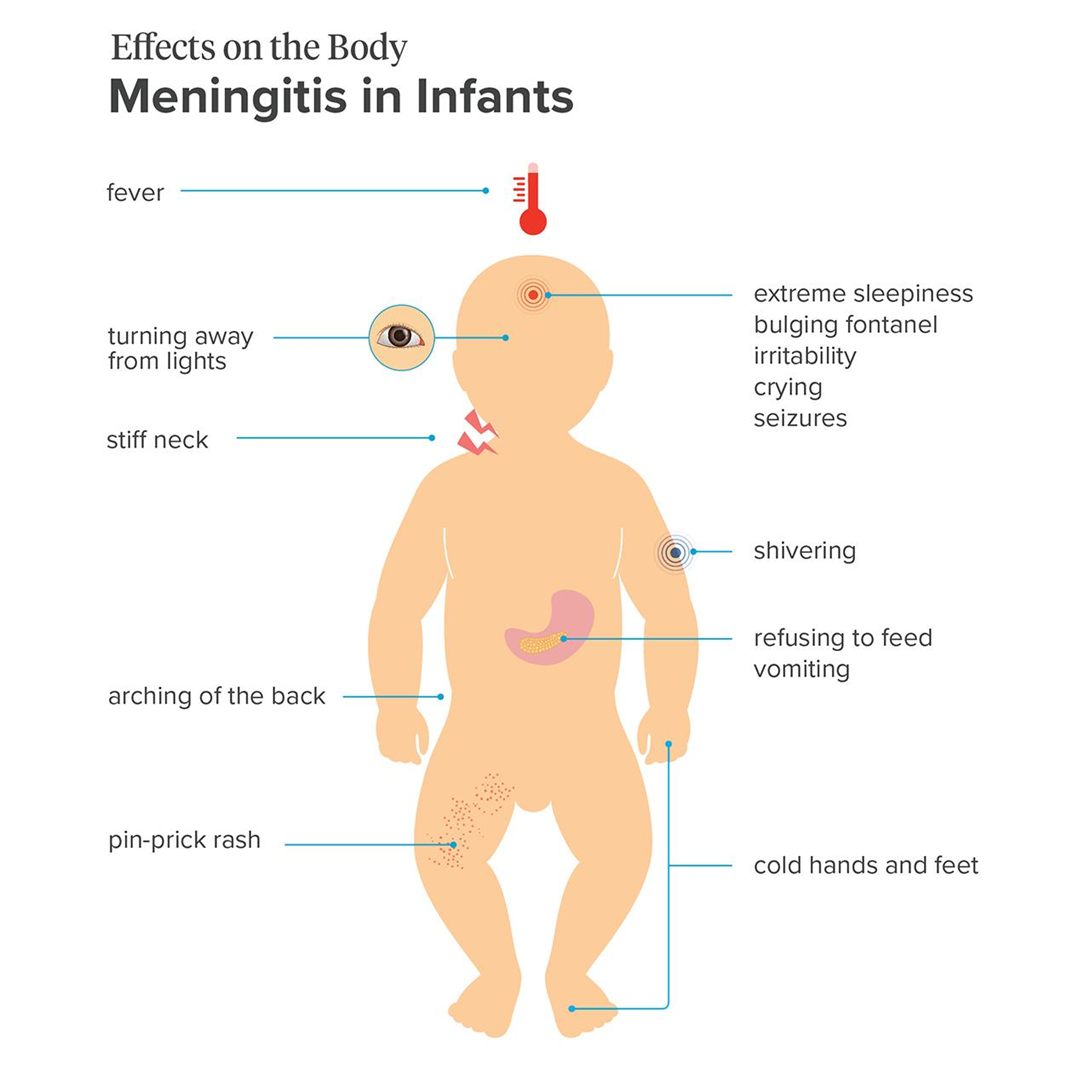The nurse is caring for a 4-month-old infant in the emergency department. The nurse reviews the infant's medical record and assessment findings. Which of the following conditions should the nurse suspect, and what actions should the nurse take to address that condition, and what parameters should the nurse monitor to assess the infant's progress?
The nurse should suspect that the infant has
meningitis.
hydrocephalus.
intracranial hemorrhage.
sepsis.
The Correct Answer is A
Choice A reason: Meningitis is a possible condition, as it is an inflammation of the membranes that cover the brain and spinal cord. It can be caused by various microorganisms, such as bacteria, viruses, or fungi. The infant has many signs and symptoms of meningitis, such as fever, irritability, lethargy, bulging fontanel, and clear cerebrospinal fluid from the lumbar puncture.

Choice B reason: Hydrocephalus is not a likely condition, as it is an accumulation of cerebrospinal fluid in the brain, which causes increased intracranial pressure and enlargement of the head. The infant has a bulging fontanel, which can indicate increased intracranial pressure, but not necessarily hydrocephalus. The infant does not have other signs of hydrocephalus, such as a rapidly increasing head circumference, prominent scalp veins, or sunset eyes.
Choice C reason: Intracranial hemorrhage is not a probable condition, as it is a bleeding within the skull, which can result from trauma, vascular malformation, or coagulation disorder. The infant has retinal hemorrhages, which can indicate intracranial hemorrhage, but not necessarily. The infant does not have other signs of intracranial hemorrhage, such as seizures, vomiting, or altered mental status.
Choice D reason: Sepsis is not a definite condition, as it is a systemic inflammatory response to an infection, which can cause organ dysfunction and shock. The infant has a fever, which can indicate sepsis, but not necessarily. The infant does not have other signs of sepsis, such as tachycardia, tachypnea, hypotension, or poor perfusion.
Nursing Test Bank
Naxlex Comprehensive Predictor Exams
Related Questions
Correct Answer is C
Explanation
Choice A reason: Administering alprazolam 0.5 mg PO is not the first action that the nurse should take. Alprazolam is a benzodiazepine that can be used to treat anxiety or insomnia, but it is not a priority intervention for a mother who has experienced a stillbirth. The nurse should assess the mother's emotional and physical needs before giving any medication.
Choice B reason: Contacting the health care facility's clergy is not the first action that the nurse should take. The nurse should respect the mother's spiritual and cultural beliefs and preferences, but not assume that she wants or needs the clergy's presence. The nurse should ask the mother if she would like to have any spiritual support or counseling.
Choice C reason: Offering the mother private time with the newborn is the first action that the nurse should take. This is a sensitive and compassionate way to acknowledge the mother's loss and grief, and to facilitate bonding and closure. The nurse should provide the mother with a quiet and comfortable environment, and allow her to hold, touch, and talk to the newborn as long as she wishes.
Choice D reason: Assisting the client with transferring to the gynecology unit is not the first action that the nurse should take. The nurse should not rush the mother to leave the labor and delivery unit, as this may increase her sense of isolation and abandonment. The nurse should allow the mother to stay in the same room until she is ready to move, and provide her with emotional and physical support during the transition.
Correct Answer is D
Explanation
Choice A reason: Tetany is not a typical finding in an infant who is dehydrated. Tetany is a condition where the muscles contract involuntarily and cause spasms or cramps. It is usually caused by low calcium levels or alkalosis, not dehydration.
Choice B reason: Slow, bounding pulse is not a typical finding in an infant who is dehydrated. A slow, bounding pulse may indicate increased intracranial pressure or heart failure, not dehydration. A fast, weak pulse is more likely to occur in an infant who is dehydrated.
Choice C reason: Decreased temperature is not a typical finding in an infant who is dehydrated. A decreased temperature may indicate hypothermia or sepsis, not dehydration. A normal or slightly elevated temperature is more likely to occur in an infant who is dehydrated.
Choice D reason: Irritability is a typical finding in an infant who is dehydrated. Irritability indicates that the infant is uncomfortable and thirsty. It may also be a sign of cerebral dehydration, which can affect the infant's mental status and behavior.
Whether you are a student looking to ace your exams or a practicing nurse seeking to enhance your expertise , our nursing education contents will empower you with the confidence and competence to make a difference in the lives of patients and become a respected leader in the healthcare field.
Visit Naxlex, invest in your future and unlock endless possibilities with our unparalleled nursing education contents today
Report Wrong Answer on the Current Question
Do you disagree with the answer? If yes, what is your expected answer? Explain.
Kindly be descriptive with the issue you are facing.
